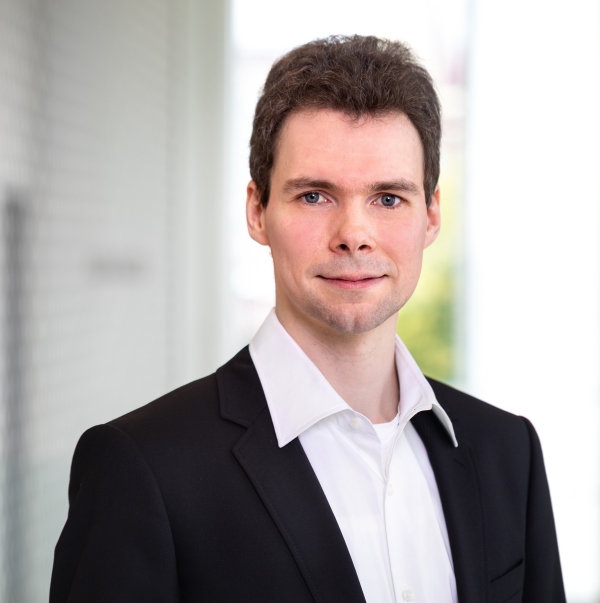Research Group Wittkowski
This research group focuses on the theoretical physics of active soft matter. This includes its fundamental properties and practical applications. Current research topics of the group include ultrasound- or light-driven microrobots, acoustofluidics, microfluidics, computational fluid dynamics simulations, ultrasound, programmable and intelligent materials, 3D printing, and artificial neural networks, as well as the applications of these topics in medicine and mechanical engineering. The methodological focuses of the group are modeling, method development, computer simulations, and software development.
Active Particles: These are microparticles that have a propulsion mechanism. When supplied with energy, they can move, for example. An example of active particles is microrobots. They can behave in much more complex ways than regular particles.
Microrobots: These active particles can move similarly to remote-controlled micro-submarines. We are developing them further and investigating their properties. Microrobots are intended to be used in medicine (e.g., for targeted drug delivery) and as a basis for new active materials with extraordinary properties. Our focus is on microrobots that are powered by ultrasound. We also study light-driven microrobots.
Acoustofluidics: This field deals with flows that can be caused by the influence of sound on liquids. It is thus a combination of acoustics and fluid mechanics. We are particularly interested in the applications of acoustofluidics. These include acoustic tweezers, which can levitate and move drops and other small objects using sound fields alone. This makes it possible, for example, to carry out chemical reactions without disturbing reaction vessels and observe them. Acoustic tweezers can also move and sort cells, which has potential applications in biomedicine. Other possible applications of acoustofluidics include microfluidic pumps for lab-on-a-chip applications that work with sound and without moving parts, and more efficient mixing of fluids using sound and without a stirrer for chemistry and pharmacy. Acoustofluidic effects can also be used to accelerate chemical reactions.
Microfluidics: We are working on applications of microfluidics. This field deals with the flow of fluids at the micrometer scale. It is particularly important for lab-on-a-chip applications and the flow of blood through the capillaries in the human body. Microfluidics makes it possible to perform analyses, for example in life sciences, using much smaller sample volumes, more cost-effectively, faster, and thus more sustainably than with other methods. Even the coronavirus antigen rapid tests are based on microfluidics.
Computational Fluid Dynamics Simulations: We are developing the software AcoDyn (https://acodyn.com/). It is written in the Rust programming language and allows for efficient simulations, particularly of acoustofluidic and microfluidic flows.
Active Materials: These are materials that consist of a regular liquid or soft material with embedded active particles. They are far-from-equilibrium materials and can thus exhibit extraordinary properties that cannot occur in regular materials.
Programmable Materials: We are working on new materials with programmable properties based on active materials.
Intelligent Materials: We are working on materials that can exhibit properties of artificial intelligence. For example, we are interested in developing active materials that could serve as artificial neural networks or reservoirs for reservoir computing.
3D Printing: We are working on using ultrasound to accelerate the 3D bioprinting of biological tissues and organs.

